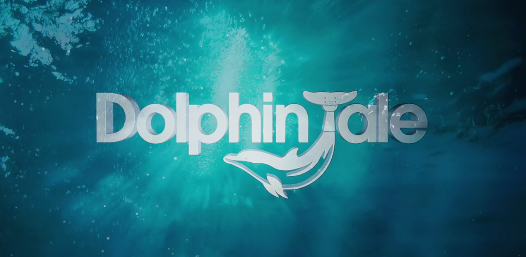
Trucked over 5 hours to the western Gulf coast of Florida to the only facility that could take her, the Clearwater Marine Aquarium, Winter was nursed back to health but tragically lost her tail fluke as a result of the terrible injuries she sustained through entanglement in the nets. Winterís tail fell off over the course of several months due to necrosis, or cell death, caused by restricted blood flow to her tail resulting from entanglement in crab pot line.At the time, it was not clear if she could survive without a tail, and she required round the clock care. Winter has now recovered health and remains at the Clearwater Aquarium in Clearwater, Florida near Tampa.
As Winterís story spread, so did the interest in her predicament. Without a tail, Winter swam like a fish, moving her tail stump side to side, rather than up and down as dolphins do, and resulting in scoliosis of her spine. Asher story moved across the news circuit, the vice president of a national company that makes artificial limbs for people contacted the aquarium with an interest in designing a prosthetic tail for Winter. After years of trials and development, Winter has been using her prosthetic tail for over four years now, and her scoliosis has been reversed. As she grows, the prosthetic must be constantly readjusted. Winter will spend the rest of her life in captivity.
Winterís story has been recreated for the big screen and depicted in A Dolphin Tale which premiered in 3-D in theaters across the United States on September23rd. WDCS is concerned that the funds raised through her publicity and for the expansion of the Clearwater Aquarium, including the construction of a dolphin performance stadium, will result in the unnecessary confinement of additional whales and dolphins in captivity.
WDCS believes the ultimate goal of any rescue efforts that include bringing whales and dolphins into captivity for rehabilitation purposes should be their temporary confinement and then release whenever possible. Although Winterís case is unique, and has served to motivate human ingenuity and innovation, WDCS encourages the highest level of transparency, accountability and commitment to release from those facilities holding and rehabilitating whales and dolphins.
We also hope that Winterís sad story will encourage action at every level to reduce entanglement in crab traps and other fishing gear. Commercial and recreational crab trap gear is commonly found in inshore bays and coastal waters. According to NMFS, in Florida, between 2005-2009, 21% of bottlenose dolphins stranded with detectable evidence of fishery interaction from North Carolina through Texas coasts were associated with crab trap gear,10% were in Florida.
The following fishing practices and responsible viewing techniques can help keep dolphins from associating people with food and suffering life-threaten inginjuries or death from fishing gear interactions:
*Immediately report entangled, injured, or dead marine mammals to 1-877-WHALE HELP (1-877-942-5343) - do not push them back into the water;
*Never feed wild dolphinsĖ itís illegal and teaches dolphins to take your bait, catch, fishing discards,and beg.
*Avoid touching, swimming, or otherwise closely interacting with wild dolphins, even if they approach you;
*Reel in fishing line when dolphins are near and donít cast towards or around dolphins, especially if they are engaged in feeding activities;
*Recycle fishing line - place all broken or used fishing line a Monofilament Fishing Line Recycling Bin or a lidded trash can.
*When using crab traps, limit float lines to minimum length necessary,especially in shallow or slack water; and use inverted crab trap bait wells or other modified traps to discourage dolphins from tipping traps to feed on bait inside. Learn more at, http://sero.nmfs.
WDCS continues to call for the end to the permanent confinement of whales and dolphins in captivity.
For more information: